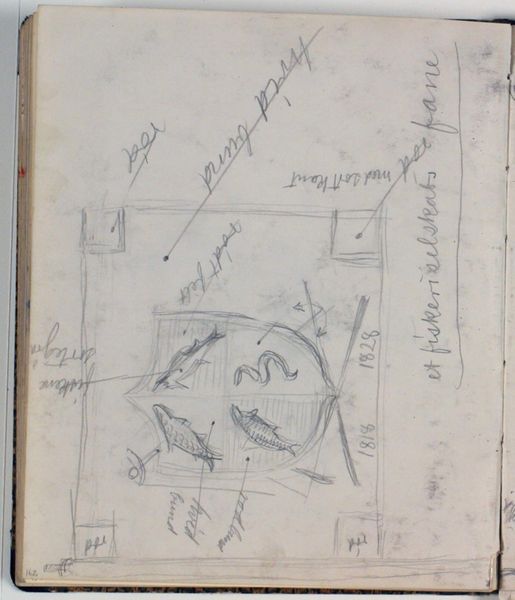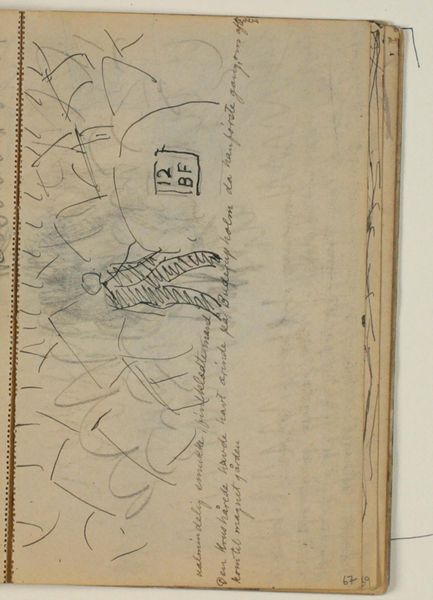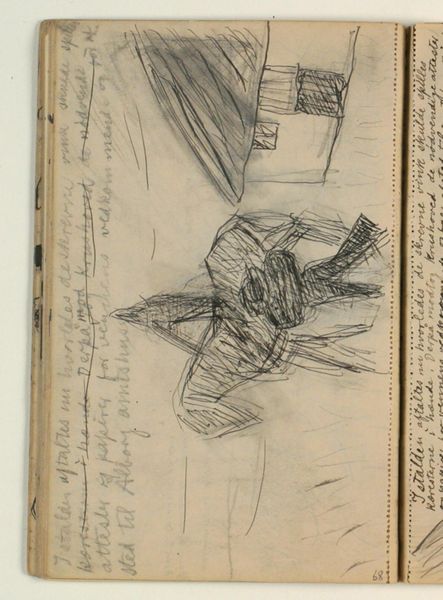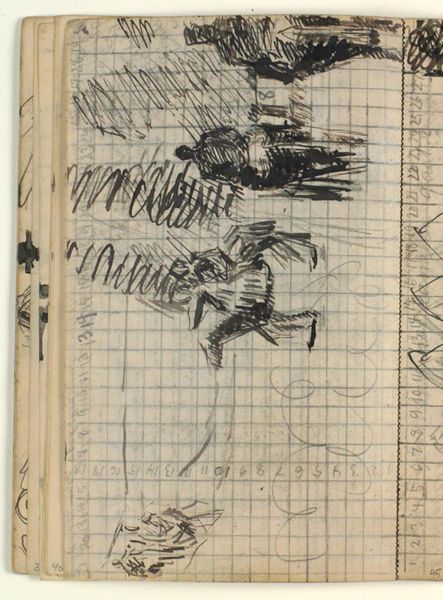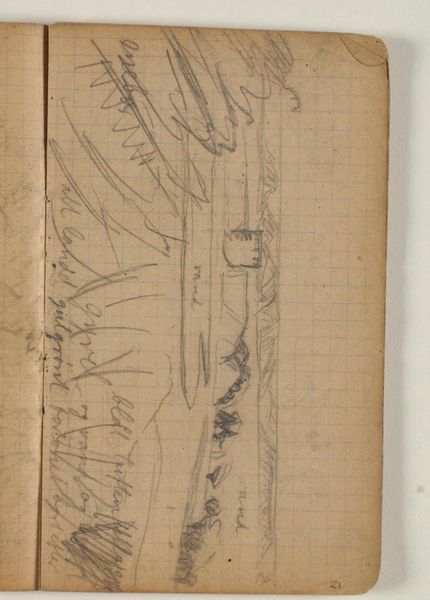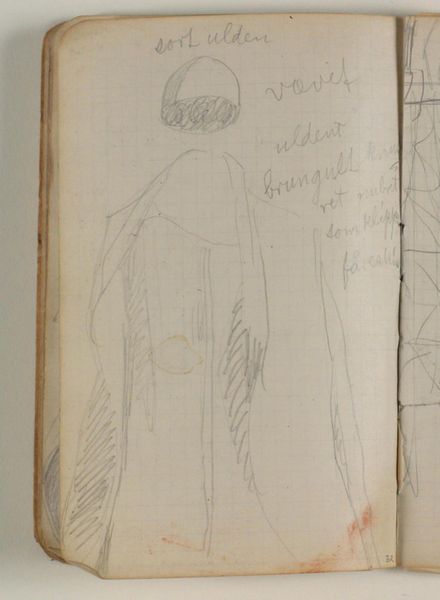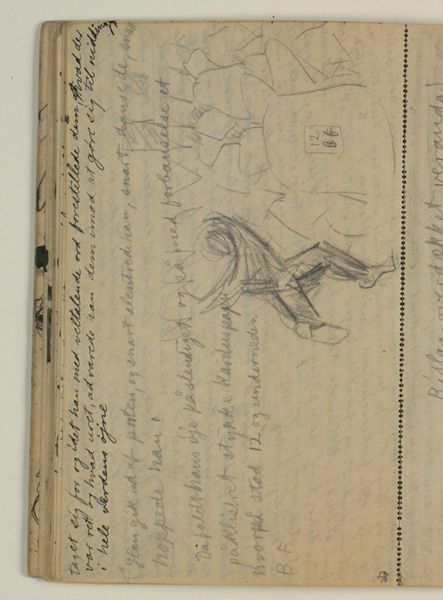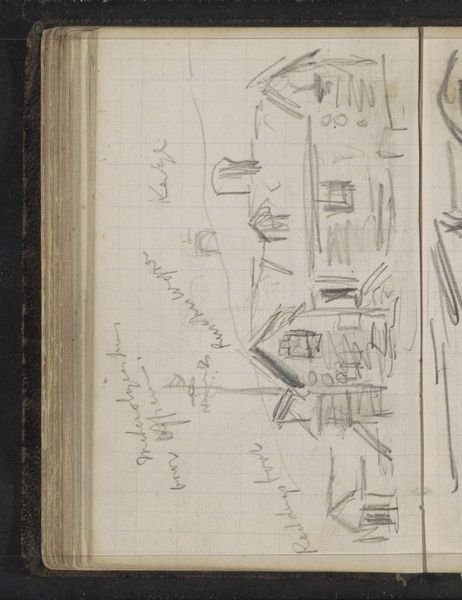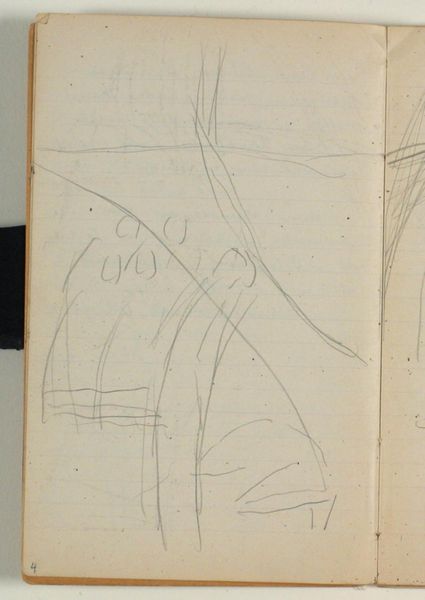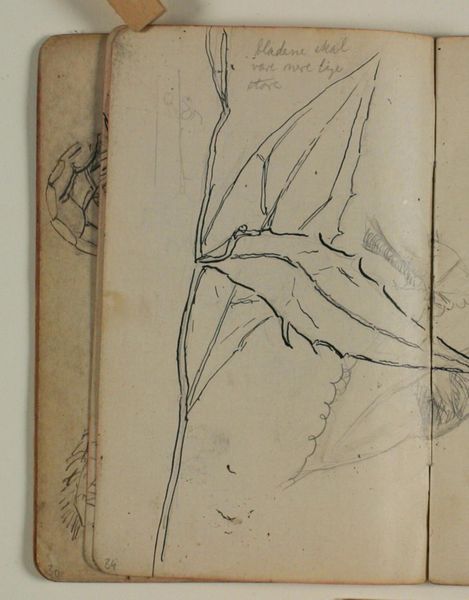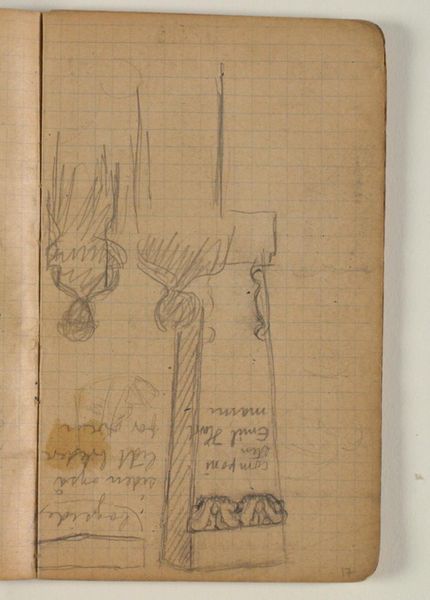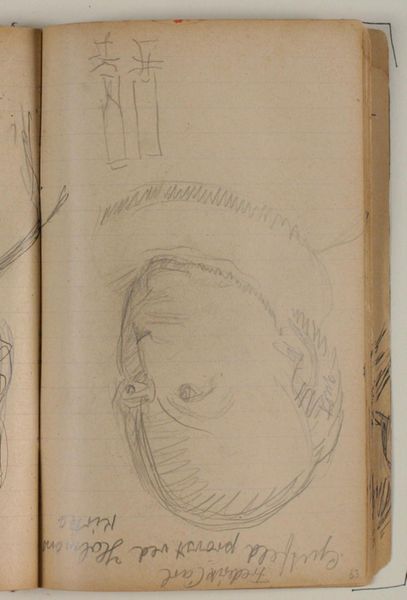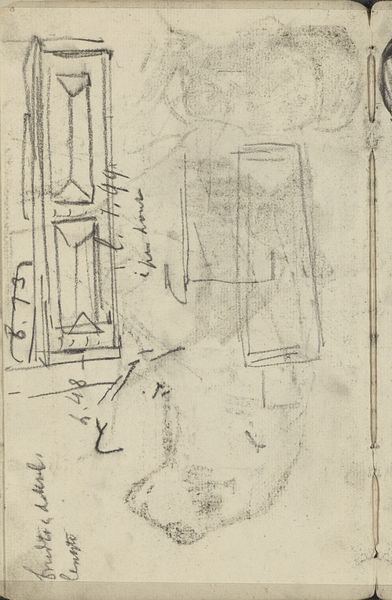
Kompositionsudkast til Blichers novelle "Vinhandleren og Herremanden", p. 201 - Kaj Lykke, Jens Bangs hustru og plejedatter færges over Limfjorden, notater 1932 - 1935
0:00
0:00
drawing, paper, pencil
#
drawing
#
paper
#
pencil
Editor: This is a compositional sketch by Niels Larsen Stevns from between 1932 and 1935. It's titled "Kompositionsudkast til Blichers novelle 'Vinhandleren og Herremanden', p. 201 - Kaj Lykke, Jens Bangs hustru og plejedatter færges over Limfjorden, notater." It’s done in pencil on paper and has a hurried, unfinished feel to it. How do you interpret this work, beyond its literal depiction? Curator: For me, this sketch offers a potent glimpse into the artist’s process, and it invites us to consider the act of translation - from Blicher's written word, rich with social commentary and regional dialect, into Stevns’ visual language. Consider the historical context: Blicher's novella likely critiqued class structures, and rural life. How might Stevns’s own social consciousness inform his choices in visualizing the crossing of the Limfjord? Editor: That’s interesting! So, the quick nature of the sketch, is that intentional? Curator: I think it absolutely speaks to intent, but it also evokes the precarity of these characters being ferried across. This isn't merely illustrating a story, it is engaging with social inequalities, visualizing the tensions embedded within the narrative through the deliberate act of sketching and re-sketching. What societal themes do you think Stevns might be addressing through this piece? Editor: I suppose the roughness could point to the everyday struggles of these people, it really makes you think about what their lives might have been like. Curator: Exactly! It highlights how artists can become activists by engaging and re-framing stories for a different audience. Thank you for prompting me to rethink this piece, especially in terms of how it speaks to class and power dynamics.
Comments
No comments
Be the first to comment and join the conversation on the ultimate creative platform.
